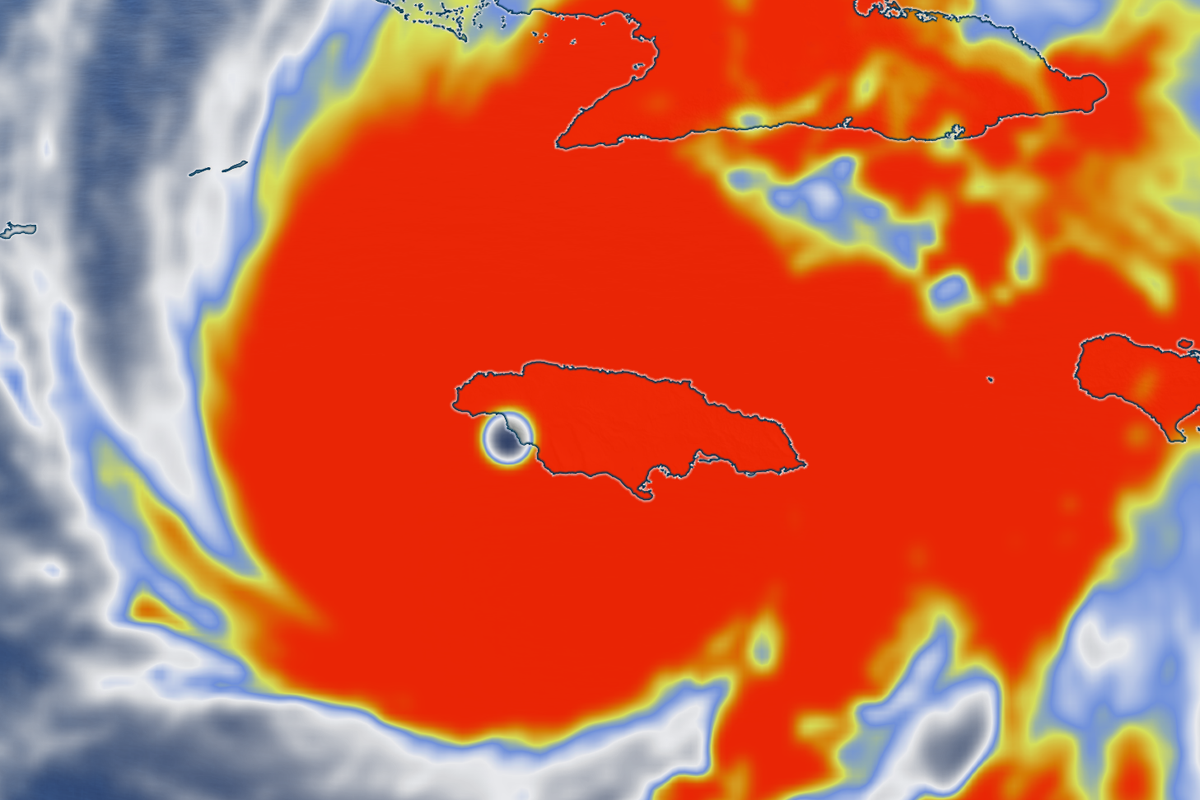
Hurricane Melissa made landfall on Cuba early on Wednesday after devastating swathes of Jamaica with violent 185mph winds.
More than 700,000 people have been evacuated from their homes in Cuba as the Caribbean island of Jamaica reeled from an estimated $22 billion (£16.6 billion) worth of damage, with towns submerged and homes blown apart.
Aid groups are still working to assess the full extent of the damage brought by the storm, with at least three people reported to have died on Tuesday. A total of seven have been killed across Jamaica, Haiti and the Dominican Republic.
Experts say that the storm’s powerful winds and its slow pace, likely exacerbated by climate change, have allowed a huge hurricane to linger in the region for maximum damage.
Jonathan Porter, chief meteorologist at AccuWeather, said that the storm was “a dire situation unfolding in slow motion”, noting that “slow-moving major hurricanes often go down in history as some of the deadliest and most destructive storms”.
“The damage from this historic hurricane landfall is devastating. This was the first direct strike from a Category 5 hurricane in Jamaica’s recorded history,” he said.
“Melissa had a tight inner core with the strongest winds roughly 20 miles across as it moved across western Jamaica. It may be a narrow path, but there will be significant destruction,” he added, warning that the damage might look similar to that of ‘severe’ EF3 and EF4 tornadoes, as seen in the United States.
The Enhanced Fujita Scale gives scores from EF0 to EF5, and EFU for unknown, rating tornado intensity based on damage. EF3 have wind speeds of 136-165mph and cause ‘severe damage’. EF4 have speeds of 166-200mph and cause ‘devastating damage’, reducing well-built homes to debris and flipping over large, heavy vehicles.
David Simon, professor of department geography at Royal Holloway, University of London, said: “Hurricane Melissa is particularly devastating because of the complex set of interacting factors driving it and the nature of the places where it has made and will still make landfall.”
“Climate change is increasing ocean temperatures, which increases evaporation,” explained Prof Simon, who is a lead author on the IPCC’s Special Report on Climate Change and Cities, to be published in March 2027.
“Air circulating in the low-pressure system picks this up and complex physics leads to a strengthening and deepening vortex that can reach many thousands of metres into the sky.”
Hurricanes use warm water to form and strengthen. Evaporation creates a mass of warm, moist air, which rises and creates an area of low pressure on the ocean’s surface.
More air from areas with higher pressure then pushes into the low-pressure area, which in turn also becomes warm and rises, fuelling the process. As the warm air cools, the water in the air forms clouds. The clouds and wind begin to grow and spin, moved by the heat and evaporation of the ocean.
As the earth rotates, the storm starts to spin, forming an eye at the centre, where air pressure remains lowest. A hurricane – defined as having wind speeds of at least 74mph – with faster wind speeds will not necessarily move more quickly through a region.
Hurricanes are in fact now travelling more slowly than they once did, resulting in more sustained damage, says the Environment Defense Force advocacy group. One theory is that the winds that steer a hurricane move slower in a warmer climate, potentially implicating climate change.
“Melissa is moving unusually slow – reportedly at 2–5 miles per hour – which means that it became particularly intense before striking Jamaica’s southwest coast last night. Similarly, it spent longer over Jamaica, thus exposing everything in its track to prolonged impacts,” Prof. Simon told The Independent.
Warming oceans also likely contribute to the rapid intensification of hurricanes like Melissa, whose winds escalated from 70mph to 140mph in just one day.
Akshay Deoras, a meteorologist at the University of Reading, said: “We’re living in a warmer world, and that means hurricanes are more likely to intensify quickly, especially near coastlines.
“That part of the Atlantic is extremely warm right now — around 30 degrees Celsius, which is 2 to 3 degrees Celsius above normal.
“And it’s not just the surface. The deeper layers of the ocean are also unusually warm, providing a vast reservoir of energy for the storm.”
Not all tropical cyclones will go the same ‘rapid intensification’ as Melissa, said Bernadette Woods Placky, chief meteorologist at Climate Central, but the likelihood of it happening would increase in “our warmer world”.
AccuWeather said that Melissa was tied as the strongest recorded landfall on record in the Atlantic basin.
While the damage to Jamaica is still being assessed, they said the preliminary estimate of total damage and economic loss to the island was $22billion (£16.6billion).
Jamaica had never before been known to take a direct hit from a Category 4 or 5 storm, and the government called for foreign aid even as it prepared for Melissa’s arrival.
James Waddington, Global Security Director at International SOS, a security risk management company, told The Independent that the immediate risks to people in Cuba were also “severe”.
“We are particularly concerned about the potential for widespread infrastructure damage, power outages, and flooding, which could significantly impact access to essential services and hinder emergency response efforts for those most in need.”
He warned that people in affected areas on the island were at risk from storm surges, flash flooding and flying debris.
